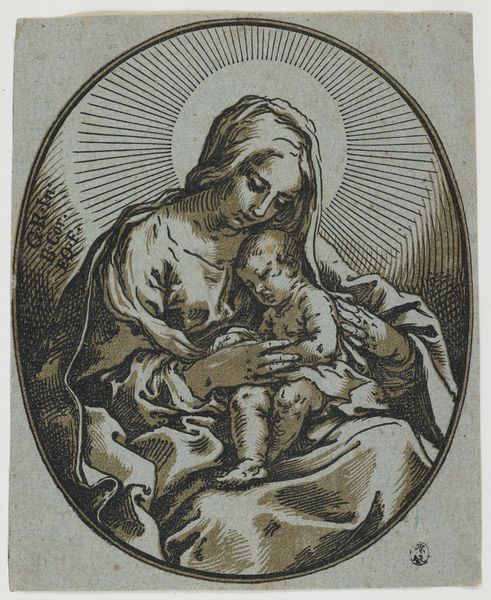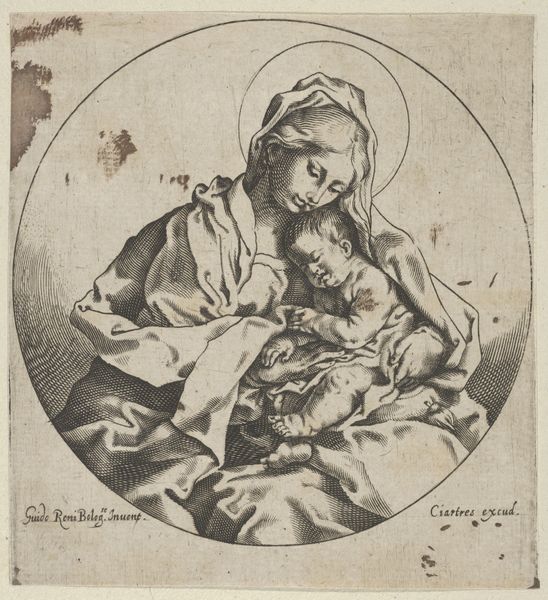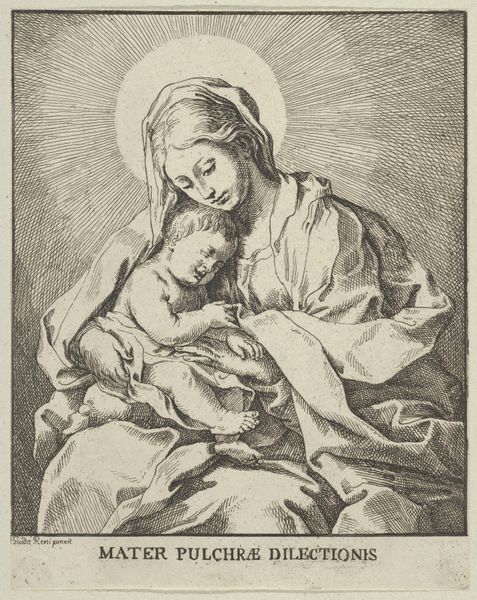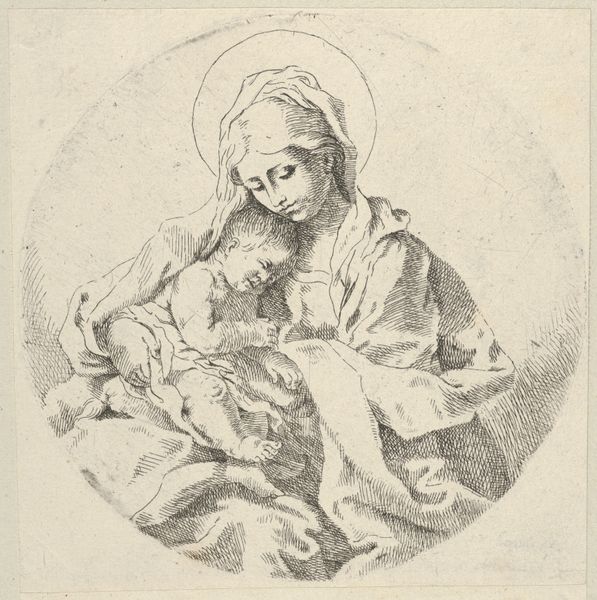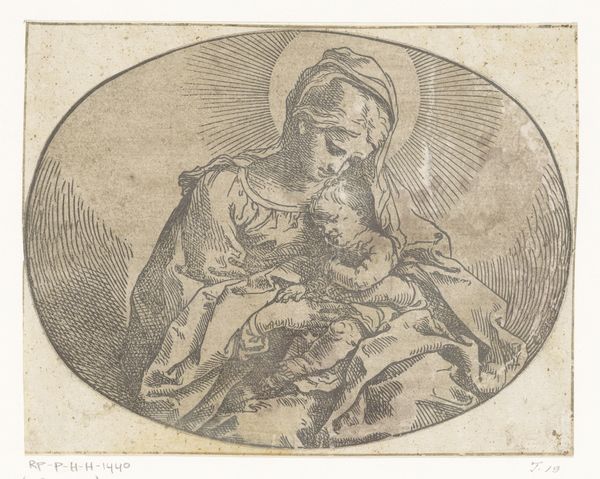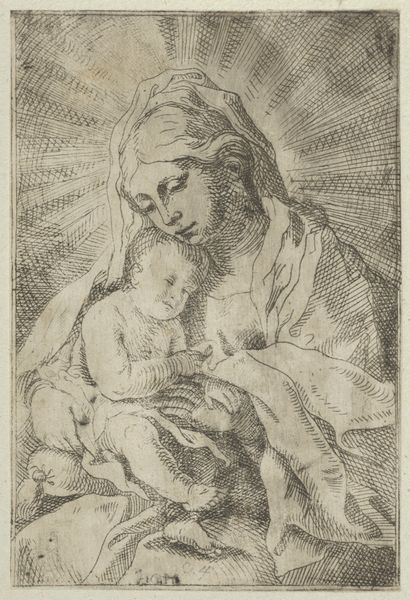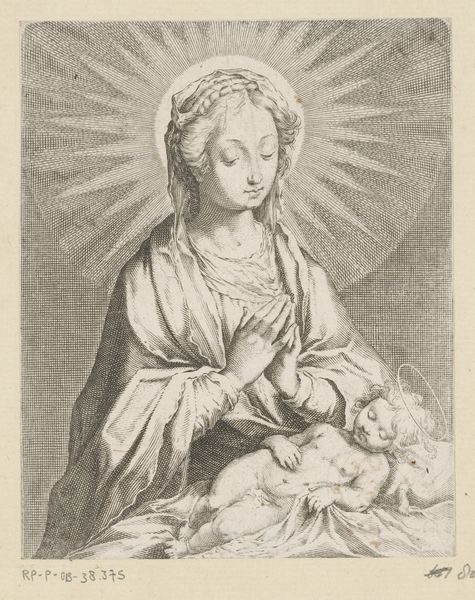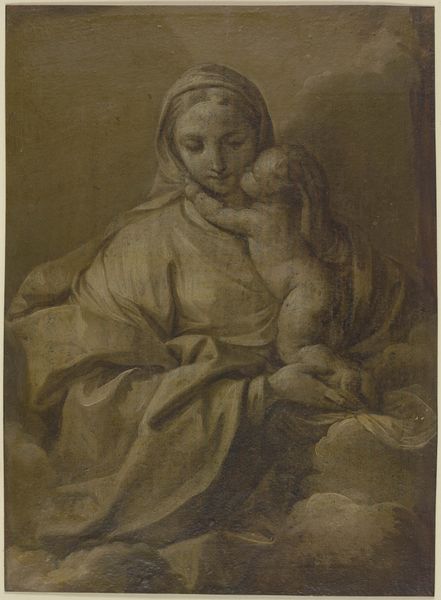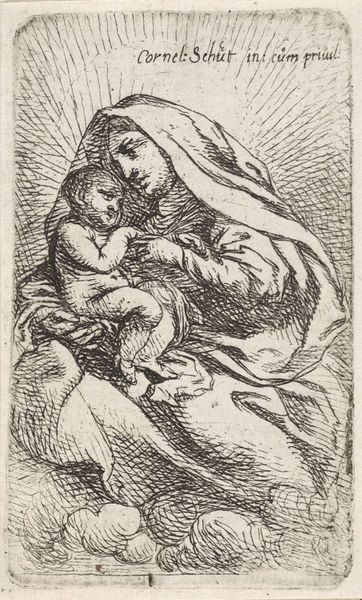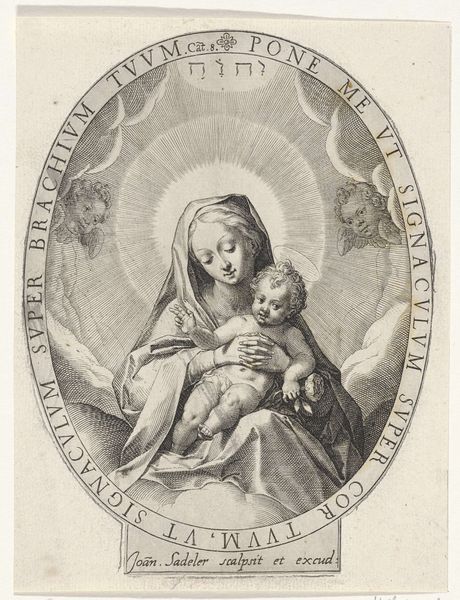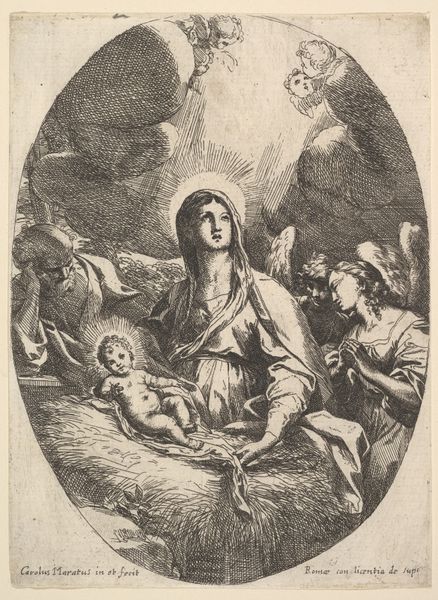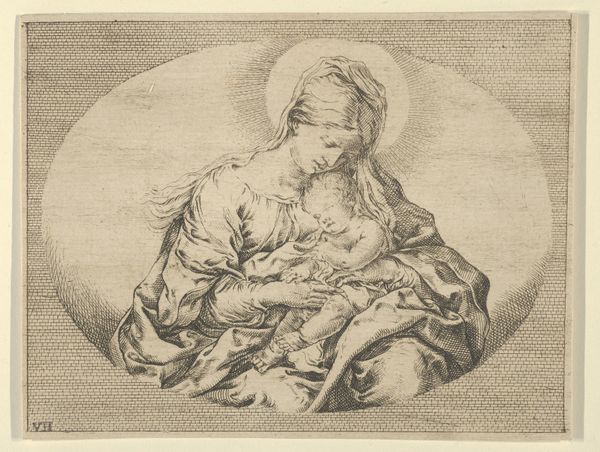
The Virgin holding the infant Christ on her lap, an oval composition, after Reni 1620 - 1650
0:00
0:00
drawing, print, engraving
#
portrait
#
drawing
#
baroque
# print
#
figuration
#
italian-renaissance
#
engraving
Dimensions: Sheet (Trimmed): 7 5/16 × 5 13/16 in. (18.5 × 14.7 cm)
Copyright: Public Domain
Curator: Here we have an engraving from the 17th century, dating roughly from 1620 to 1650. The piece is titled "The Virgin holding the infant Christ on her lap, an oval composition, after Reni". It is currently held in the collection of the Metropolitan Museum of Art. Editor: My first impression is one of profound tenderness. The delicate lines create a soft, almost ethereal quality. There’s such a clear focus on the intimacy between mother and child, heightened by that oval frame. Curator: Absolutely. The composition invites us to contemplate not only the divine aspects of the scene but also the very human connection between Mary and Jesus. The piece reflects the baroque style of Italian Renaissance with the typical visual cues that were in use at the time in reference to representations of power, control, and importance of the religious establishment. Editor: Notice how the artist uses light—the halo, of course, but also the way the fabric folds are delineated. Light, traditionally a divine symbol, is employed to emphasize purity and holiness, yes, but also the intimate gaze between them that inspires safety, and shelter. We feel it because of the clever arrangement of chiaroscuro effects here, adding emotional depth and psychological weight. Curator: This iconography certainly aligns with the political and social function of religious images during that period, conveying moral and religious values while solidifying social hierarchies. But there's also the maternal narrative and what it tells us about the subjugation of women's bodies under those strict patriarchal power structures... it really begs so many complex questions. Editor: But also maternal love, doesn't it? That's timeless. Looking at how this image of mother and child continues to resonate, how it appears again and again in various guises—it underscores a core element of the human experience. It’s that continuity, that persistent emotional current carried across centuries by visual symbols, that really fascinates me. Curator: It's this tension between prescribed meanings and enduring emotions, that is always up for review under our current gaze, that makes analyzing such art so vital in this era. Editor: Indeed. The endurance of that mother-child bond, rendered in those delicate lines, is pretty unforgettable, regardless of the setting.
Comments
No comments
Be the first to comment and join the conversation on the ultimate creative platform.
